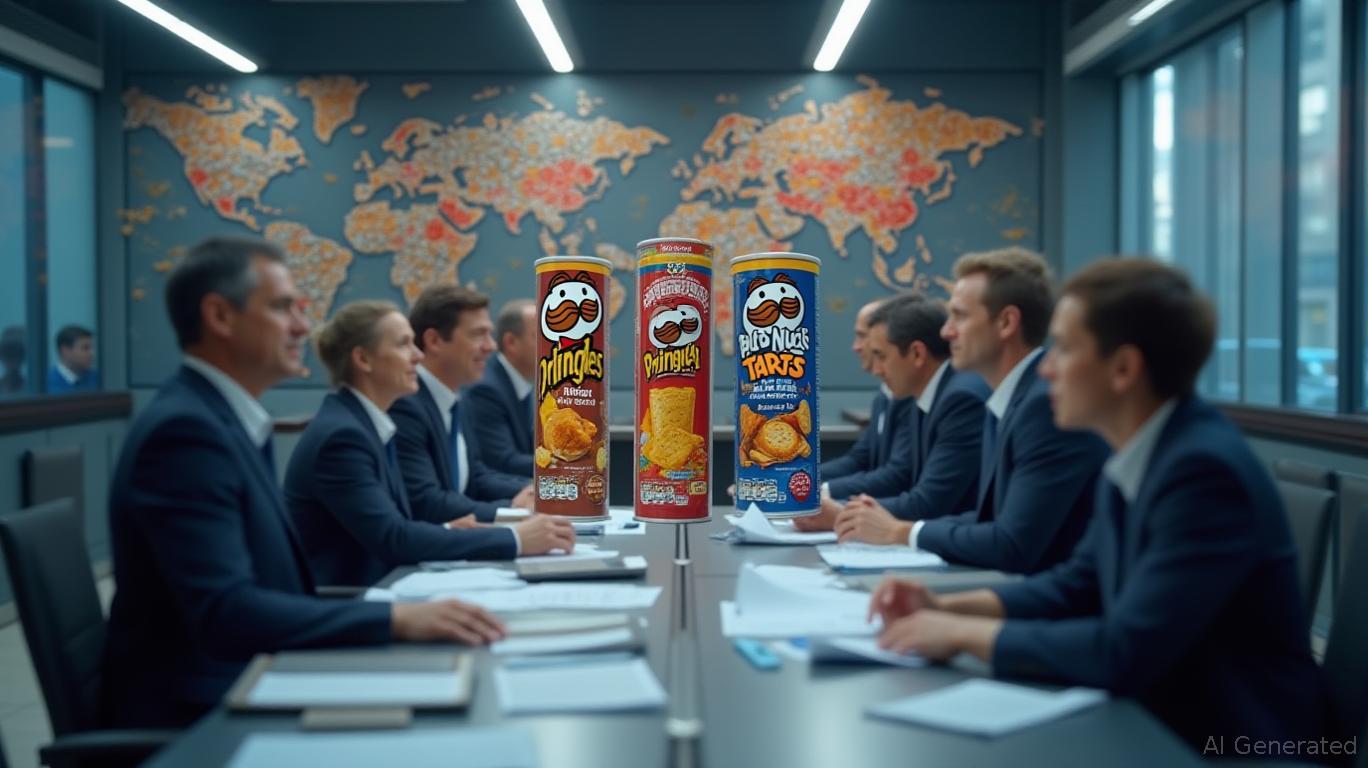Mars-Kellanova Merger: Navigating Regulatory Risks and Sector Shifts in Consumer Goods
The $36 billion merger between Mars and
, announced in June 2025, has thrust the consumer goods sector into a high-stakes regulatory showdown. With the European Commission's Phase II antitrust investigation now scrutinizing the deal, investors face a critical question: Can Mars successfully navigate the EU's concerns, or will the merger unravel, reshaping industry dynamics?
Regulatory Hurdles: A Precarious Tightrope
The EU's probe centers on overlapping product lines in savory snacks (Pringles vs. Masterfoods), breakfast items (Pop-Tarts), and frozen meals, where the combined entity would control nearly 60% of Kellanova's revenue in these categories. Regulators fear the merger could allow Mars to leverage its enhanced bargaining power with retailers, leading to higher consumer prices and stifling competition. The European Commission's antitrust chief, Teresa Ribera, has emphasized the need to prevent further inflation-driven cost increases, stating, “This acquisition must not further burden shopping baskets.”
The October 31, 2025, deadline for the investigation is a pivotal moment. A conditional approval requiring divestitures exceeding $750 million in annual revenue—such as Kellanova's European Pringles business or parts of its frozen breakfast line—would trigger a $1.25 billion reverse termination fee, potentially collapsing the deal. Analysts note that Mars' shares have already dipped amid regulatory uncertainty, reflecting market skepticism about the merger's viability.
Strategic Risks: Debt, Divestitures, and Market Power
Mars' $55 billion debt burden looms large. If the deal collapses, the company faces refinancing challenges and potential credit downgrades, given its reliance on a $15 billion bridge loan. Even if the merger proceeds, divestitures could strip away high-margin assets, diluting synergies. For instance, Kellanova's Pringles business alone generates over $2 billion annually—well above the $750 million divestiture threshold that could kill the deal.
The strategic implications extend beyond Mars. The EU's aggressive stance signals a broader shift: regulators are increasingly skeptical of consolidation in consumer goods, where pricing power and brand dominance can disproportionately impact households. This scrutiny could deter future M&A activity, pushing companies to prioritize organic growth over acquisitions.
Market Dynamics: Winners and Losers in a Post-Merger World
If the merger survives, Mars would solidify its position as a snacks-and-confections titan, but at the cost of ceding assets to competitors. Players like
International (MDLZ) or (UL) might snap up divested brands, gaining market share in key categories. However, the sector's broader trend toward fragmented, price-sensitive markets could amplify pressure on smaller rivals.Conversely, a failed deal would mark a historic regulatory victory, likely chilling M&A enthusiasm across the industry. Investors in consumer goods firms with high debt loads or concentrated product portfolios—such as
(HSY) or (CPB)—should take note.Investment Implications: Proceed with Caution
- Mars (MARSS): Underweight until regulatory clarity. The stock's valuation hinges on merger success, but the $1.25 billion termination fee risk and debt overhang make it a high-risk bet. Shorting Mars could be prudent if divestiture demands escalate.
- Sector Exposure: Favor firms with strong organic growth, such as (KO) or (PEP), which rely less on M&A and have diversified portfolios.
- Regulatory Plays: Monitor companies like (MKC) or (GIS), which might benefit from a fragmented market but face their own antitrust risks.
- Macro Context: Inflation remains a key variable—higher prices could push regulators to reject the merger, amplifying sector-wide volatility.
Conclusion: A Crossroads for Consumer Goods
The Mars-Kellanova merger is a microcosm of the industry's future. If regulators block the deal, the era of $30+ billion consumer goods mergers may be over, forcing companies to innovate organically or face heightened scrutiny. Investors must balance the allure of scale against the growing risks of regulatory intervention and debt-fueled expansion. For now, the prudent move is to bet on flexibility—and keep a close eye on Brussels.
Final thought: In a sector where “must-have” brands drive pricing power, the EU's focus on consumer harm may redefine what's “essential” in M&A valuations.

Comments
No comments yet